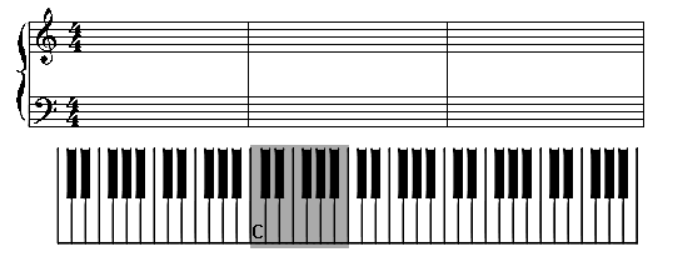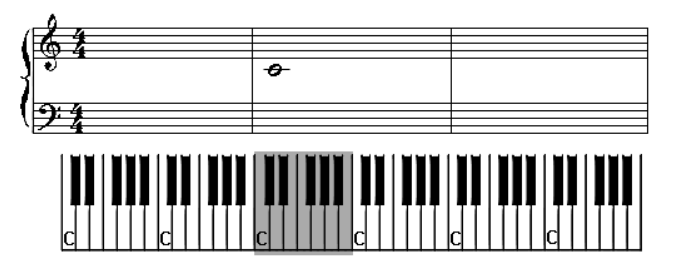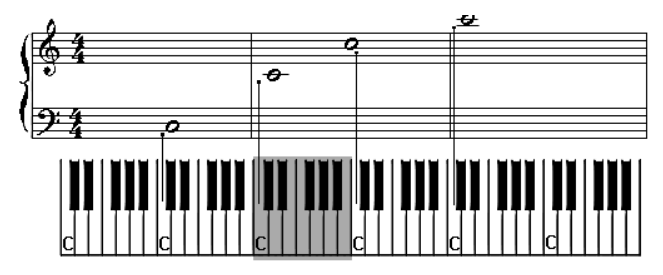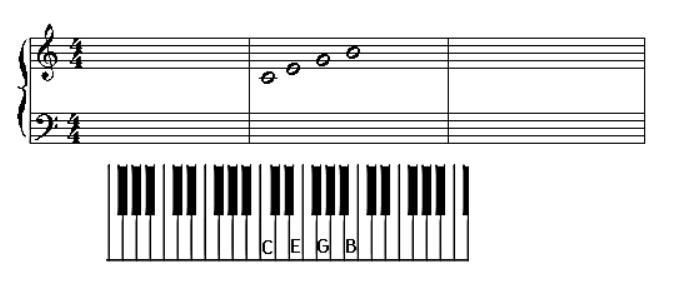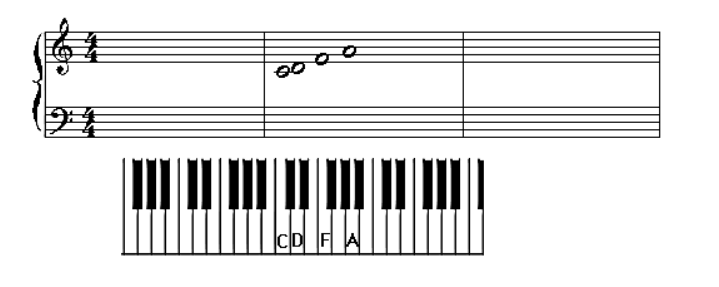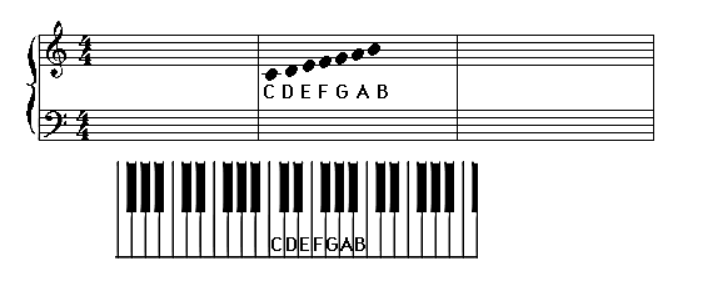How "C" Notes Look on the Staff
Here are some other “C” notes and how they look when they are written on the staff. See middle C in the shaded area? Go to the right and look at the next “C” above middle C. Now go to the left and look at the next “C” below middle C.
Count the keys on the keyboard (including the black keys) and you will find that there are 12 keys (notes) between each “C” on the keyboard. On the Staff, above the keyboard, count the lines and spaces between two “C” notes and you will find that there are a total of 8 lines and spaces between two “C” notes.
Learning About Octaves
This spacing of 12 half steps (includes white and black notes) on the keyboard or 8 (includes lines and spaces) on the staff, is called an Octave. In the image, you are looking at Octaves on the staff and on the keyboard, (from one “C” note to the next “C” note). You will eventually learn all the notes in 1 octave. The octave we will concentrate on will include middle C.
For now, go ahead and find all the “C” notes you can on your keyboard.
NOTE: Keyboards come in different widths so don’t worry if you end up with more or less “C” notes than the keyboard shown in the image. Look for two black keys and then the first white key to the left of these black keys. This white key will always be a “C” note.
Now that you’ve mastered “C” notes, it’s time to learn the other 11 notes in 1 octave.


